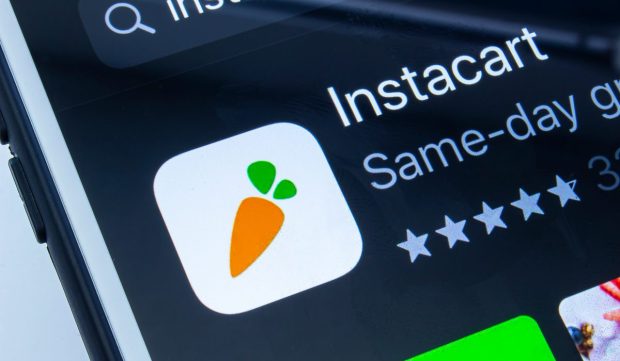Grocery Delivery Evolves From Luxury Service to Mass-Market Option

Grocery delivery tends to be expensive, with the added fees of the channel and the cost of the tip raising prices and with order minimums requiring larger purchases than one might be used to.
For much of the pandemic, consumers with more disposable incomes shelled out for the service, while those on tighter budgets continued to frequent brick-and-mortar stores. Now, as online grocery businesses look toward their post-pandemic future, many are trying to expand their audiences to include those of all income brackets.
Instacart, for example, has announced two moves in the past week to bring its offerings to a wider audience. The online grocery marketplace announced Thursday (April 14) the expansion of its partnership with discount grocer Grocery Outlet to include almost 400 stores across seven states.
“We know accessibility matters, and our successful pilot proved the value delivery in as fast as an hour provides Grocery Outlet customers,” Instacart Vice President of Retail Chris Rogers said in a statement. “As consumers continue to seek value, selection and convenience, we’re proud to support Grocery Outlet as the retailer continues to build an engaging online experience for their customers.”
The pilot of the program, which launched in October, included fewer than 70 stores in California.
Read more: On-Demand Economy Comes for Discount Grocery
The news came just one day after Instacart announced that it is partnering with Wegmans Food Markets to accept electronic benefits transfer (EBT) and Supplemental Nutrition Assistance Program (SNAP) payments at the grocer’s 106 stores in New York, Pennsylvania and New Jersey.
See more: Instacart to Accept EBT SNAP Payments on Wegmans Orders
“Online grocery shouldn’t just be a luxury, and to get there, we need to ensure delivery and pickup are affordable for everyone,” Sarah Mastrorocco, vice president of access to food and nutrition at Instacart, said in a statement. “We’re thrilled to provide households that rely on EBT SNAP benefits with more access to Wegmans’ quality produce and expansive selection across the East Coast.”
Over the past several years, a greater number of grocers have been adding options to pay with EBT SNAP online. For these companies, such initiatives expand their audience, given that, according to 2019 U.S. Department of Agriculture (USDA) data, 12% of the total population participates in the program.
Additionally, financial accessibility is the single greatest motivator of consumers’ grocery preferences. Research from PYMNTS’ January study, “Decoding Customer Affinity: The Customer Loyalty to Merchants Survey 2022,” created in collaboration with Toshiba Global Commerce Solutions, found that 37% of shoppers cite price as the most influential factor when selecting a merchant to purchase groceries from, a greater share than said the same of any other factor.
Get the report: The Customer Loyalty to Merchants Survey 2022
Moreover, the study, which drew from the results of a census-balanced survey of more than 2,000 U.S. consumers, found that price is an even more powerful motivator for consumers in the lowest income bracket than those in the middle or highest, and 77% of grocery shoppers reported that low prices would improve their loyalty to grocery merchants.
